As cherished civic landmarks, the demolition of libraries is always a polemic issue. More often than not, the demolition is justified by the perceived obsolesce of a library’s physical infrastructure, seemingly unsuited for the needs of a new generation. When done irresponsibly, demolitions can lead to the loss of important architectural and civic landmarks, eroding the unique heritage of our communities. However, there are times when there are good reasons to demolish and rebuild.
When the former South End Public Library in Sudbury was discovered to be structurally unsound, Yallowega Bélanger Salach Architecture (YBSA, est. 1964) took the opportunity to create a new civic landmark, engaging staff and community in designing a library responsive to their needs. The new focus is on open, transparent spaces designed for gathering and conversation. Not only is the space and layout in the library a reflection of modern library use, but so is the approach taken for its design: a careful, site-specific response with its priorities determined by community consultation and research.
Though libraries are often renovated to stay current with community needs, on occasion there are reasons to rebuild—the need to grow, pressures to move, or old layouts impractical to renovate. Sometimes the reasons to rebuild are more extreme. Built in 1989 and leased by the city as a library since 19921 , Sudbury’s South End Public Library is the second-busiest of Sudbury’s public library branches, only behind the main branch in downtown. Unfortunately, the library’s original building also had an unusual problem which would lead to its eventual demolition - it was sinking. Surprisingly, many of the built areas of Sudbury sit atop a swamp—not rock as many would assume. This of course, has meant that many of Sudbury’s structures are designed to float. On March 6, 2009 the library was closed after a series of escalating structural issues made the existing building unsafe. Because the old, sinking building was not a viable for reuse, the City decided to pursue the design of a new facility.
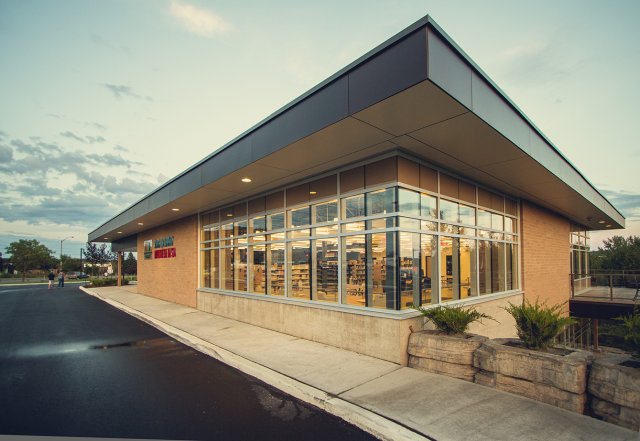
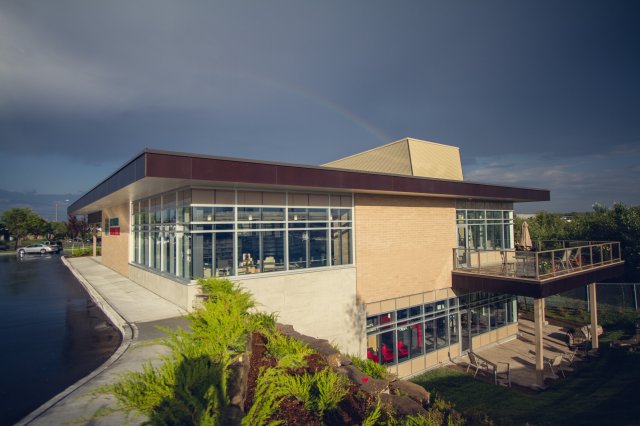
Photo Credit: Andrew Knapp
Out of this unfortunate closure emerged an opportunity to create a new library which was responsive to the community’s needs. Yallowega Bélanger Salach Architecture (YBSA) was selected by the City of Greater Sudbury to work with both staff and the community to design a new building for its South End library. Much like all public projects, the design process involved many community discussions, information gathering, distilling, and translating. YBSA met with staff, neighbours, library users, and near-by schools to tease out what a new library should accomplish and provide for the growing population.
The community desired an open, flexible space and City and library staff wanted a new library that would provide users with an environment in which exploring new reads was comfortable and inspiring. Everyone involved wanted a library that would offer new opportunities for a variety of users, activities, and education. The result of all of the hard work is not only a modern library for the city, but also a dynamic visual landmark that unofficially welcomes visitors travelling north from Toronto. Since the completion of the new facility in 2012, the South End Library’s membership has grown exponentially.
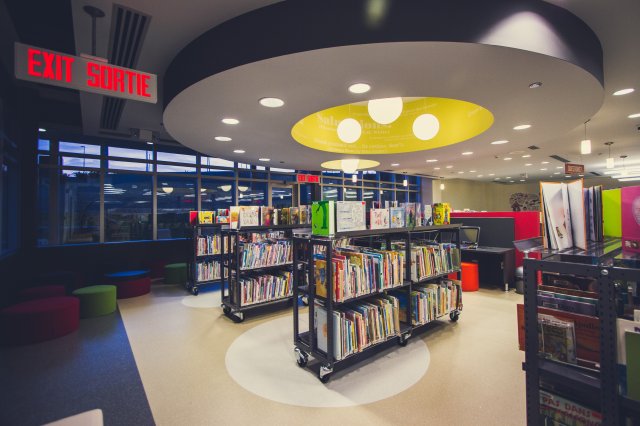
Photo Credit: Andrew Knapp
The project’s parti speaks largely to the final site selected for the new building. Perched atop a slight hill and sandwiched between a large industrial property and a major vehicular corridor, the design team’s response was to celebrate the active street frontage and offer an open, welcoming entrance. Simultaneously, they took advantage of the hill's slope to create an internal area that provided quiet, contemplative spaces with views of the vast forests—a balance that northern sites constantly offer. The sensitive placement on the deceptively complex site ensures that the library is permeated with natural light on even the greyest winter days.
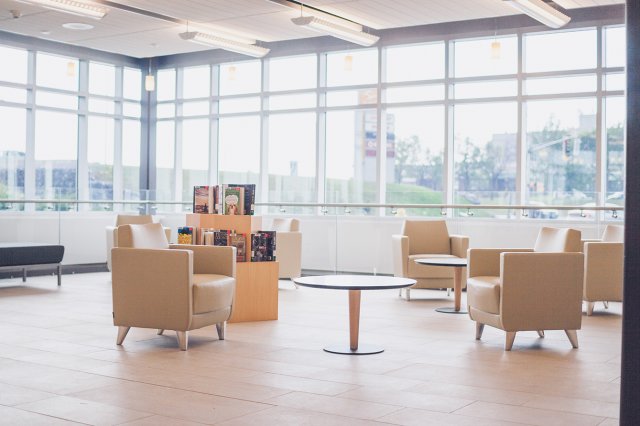
Photo Credit: Andrew Knapp
While born out of unfortunate circumstances, the new South End Public Library now stands as an example of contextual responsiveness and site sensibility, taking advantage of solar orientation, views and street frontage while responding to the needs of its community and users.
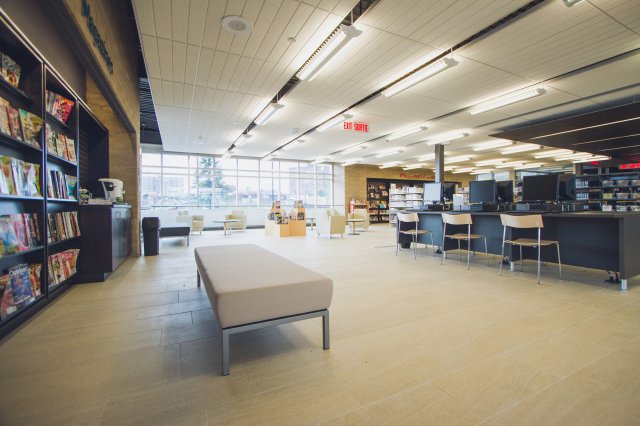

Photo Credit: Andrew Knapp
Project Team:
Architecture – Yallowega Bélanger Salach Architecture (Louis Bélanger, Amber Salach, William Boudreau, Tony Niro, Marcel Martin)
Civil – EXP Engineering
Structural – Halsall Associates Inc.
Mechanical – SNC Lavalin Ltd. Electrical – SNC Lavalin Ltd.
References:
1. Whitehouse, Mike. Broken sewer wrecked library, The Sudbury Star http://www.thesudburystar.com/2011/08/17/broken-sewer-wrecked-library